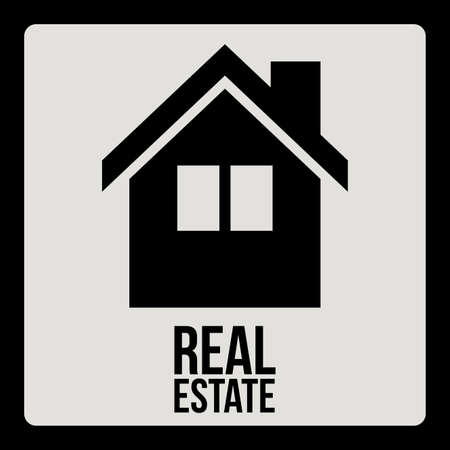1. Understanding Fixed-Rate Mortgages
When youre thinking about buying a home, one of the biggest decisions youll make is how to finance it. A fixed-rate mortgage is one of the most common options for homeowners in the U.S., and for good reason—it offers stability and predictability over time.
What Is a Fixed-Rate Mortgage?
A fixed-rate mortgage is a home loan where the interest rate stays the same throughout the entire term of the loan. That means your monthly principal and interest payments wont change, no matter what happens in the broader economy or with interest rates.
Typical Terms for Fixed-Rate Mortgages
Fixed-rate mortgages come in different lengths, but here are the most common terms:
| Term Length | Description |
|---|---|
| 30-Year Fixed | Most popular option; lower monthly payments spread over 30 years. |
| 15-Year Fixed | Higher monthly payments but less interest paid over time. |
| 20-Year Fixed | A balance between monthly affordability and total interest cost. |
Why Homeowners Choose Fixed-Rate Mortgages
One of the biggest advantages of a fixed-rate mortgage is the peace of mind it provides. Since your rate doesn’t change, you always know what to expect with your monthly payment. This makes budgeting easier and protects you from rising interest rates in the future.
Key Benefits:
- Predictable Payments: Your monthly mortgage payment stays consistent over time.
- Simplified Budgeting: Easier to plan long-term finances without surprises.
- Stability During Market Fluctuations: You’re protected if interest rates go up later on.
Good Fit For:
- Homebuyers planning to stay in their home for many years
- Those who prefer financial consistency and low risk
- Buyers with fixed incomes or strict budgets
If youre someone who values stability and wants to avoid surprises in your housing costs, a fixed-rate mortgage might be a great fit for you.
2. What Is an Adjustable-Rate Mortgage (ARM)?
An Adjustable-Rate Mortgage, or ARM, is a type of home loan where the interest rate can change over time. Unlike a fixed-rate mortgage, which keeps the same interest rate for the life of the loan, an ARM usually starts with a lower rate for an initial period and then adjusts periodically based on market conditions.
Initial Fixed Period
Most ARMs begin with an initial fixed-rate period. During this time, your interest rate and monthly payments stay the same. This period typically lasts 3, 5, 7, or 10 years. The longer the fixed period, the higher the starting rate might be, but it gives you more payment stability upfront.
Common ARM Terms:
| ARM Type | Initial Fixed Period | Adjustment Frequency |
|---|---|---|
| 5/1 ARM | 5 years | Annually after the 5th year |
| 7/1 ARM | 7 years | Annually after the 7th year |
| 10/1 ARM | 10 years | Annually after the 10th year |
Interest Rate Adjustments
Once the initial fixed period ends, your interest rate will adjust at regular intervals—usually once a year. These adjustments are based on a benchmark index (like SOFR or the 1-Year Treasury rate) plus a margin set by your lender. If market rates go up, so could your monthly payment; if they go down, you might pay less.
Caps That Limit Rate Changes
The good news is that ARMs come with caps to protect you from extreme increases in interest rates. There are three main types of caps:
Types of ARM Caps:
| Cap Type | Description | Example (5/2/5 Cap) |
|---|---|---|
| Initial Adjustment Cap | The maximum your rate can increase after the initial fixed period. | No more than 5% increase at first adjustment. |
| Periodic Adjustment Cap | The maximum your rate can increase from one adjustment to the next. | No more than 2% increase annually after first adjustment. |
| Lifetime Cap | The maximum total increase over the life of the loan. | Your rate won’t go up more than 5% above the original rate. |
The Bottom Line on ARMs (So Far)
An ARM might be a smart option if youre planning to move or refinance before the fixed-rate period ends. It offers lower initial payments compared to a fixed-rate mortgage, but its important to understand how adjustments work and what your maximum potential payments could be in future years.

3. Pros and Cons of Fixed vs. Adjustable Rates
Choosing between a fixed-rate mortgage (FRM) and an adjustable-rate mortgage (ARM) depends on your financial goals, how long you plan to stay in the home, and your comfort with risk. Lets break down the advantages and disadvantages of each to help you better understand which option might be a good fit for your situation.
Fixed-Rate Mortgages
Pros:
- Predictable Monthly Payments: Your principal and interest payments stay the same throughout the life of the loan, making it easier to budget.
- Protection from Interest Rate Hikes: You’re locked into the same rate even if market rates go up.
- Simplicity: Fixed-rate mortgages are straightforward and easy to understand.
Cons:
- Higher Initial Rates: Compared to ARMs, fixed rates typically start higher.
- Less Flexibility: If you plan to move or refinance in a few years, you might end up paying more in interest than necessary.
Adjustable-Rate Mortgages
Pros:
- Lower Initial Rates: ARMs usually offer lower starting interest rates, which means lower initial monthly payments.
- Potential Savings: If interest rates remain stable or decrease, you could save money over time.
- Might Fit Short-Term Plans: Great for buyers who plan to sell or refinance before the adjustable period kicks in.
Cons:
- Rate Uncertainty: After the initial fixed period, your rate can increase based on market conditions, which may lead to higher payments.
- Difficult Budgeting: Because future payments are unknown, it can be harder to plan long-term finances.
- Capped Adjustments Still Risky: Even though there are limits on how much your rate can change, increases can still impact affordability.
A Quick Comparison
| Fixed-Rate Mortgage (FRM) | Adjustable-Rate Mortgage (ARM) | |
|---|---|---|
| Initial Interest Rate | Tends to be higher | Tends to be lower |
| Monthly Payment Stability | Stable for entire loan term | May fluctuate after initial period |
| Suits Long-Term Buyers? | Yes, especially if staying 10+ years | No, better for short-term plans |
| Savings Potential Over Time | If rates stay low: less likely | If rates drop/stay low: possible savings |
| Main Risk | Pays more upfront in stable rate environment | Payments could rise significantly over time |
The best choice really comes down to your personal situation—how long you expect to keep the home, how comfortable you are with potential changes in payments, and what the interest rate environment looks like when youre buying. Understanding these pros and cons gives you a solid foundation for making an informed decision as you continue exploring mortgage options.
4. Which Mortgage Makes Sense for Your Situation?
Choosing between a fixed-rate mortgage (FRM) and an adjustable-rate mortgage (ARM) depends on your personal circumstances. To figure out which one fits you best, consider how long you plan to live in the home, what the current interest rates look like, and what your financial goals are.
How Long Do You Plan to Stay in the Home?
This is a big factor. If youre planning to stay in your home for a long time—say, 10 years or more—a fixed-rate mortgage might be a better fit because it offers long-term stability. But if you think youll move or refinance within a few years, an ARM could save you money with its typically lower initial rate.
| Stay Duration | Recommended Mortgage Type |
|---|---|
| Less than 5 years | Adjustable-Rate Mortgage (ARM) |
| 5–10 years | Depends on rate trends and risk tolerance |
| More than 10 years | Fixed-Rate Mortgage (FRM) |
Current Market Interest Rates
If mortgage rates are low when youre buying, locking in a fixed rate can protect you from future increases. On the other hand, if rates are high now but expected to drop later, an ARM may offer short-term savings and the chance to refinance when rates go down.
Example:
- Low Current Rates: Consider FRM for long-term savings.
- High Current Rates: Consider ARM with plans to refinance later.
Your Financial Goals and Risk Tolerance
If budgeting consistency is important to you, or if youre on a fixed income, the predictability of an FRM can bring peace of mind. But if youre comfortable with some financial uncertainty and want to take advantage of lower payments early on, an ARM might work better for you.
Comparison: Fixed vs. Adjustable Based on Financial Priorities
| Priority | Better Option | Why? |
|---|---|---|
| Stable Monthly Payments | Fixed-Rate Mortgage | No surprises; payments stay the same over time. |
| Lower Initial Payment | Adjustable-Rate Mortgage | Initial interest rate is usually lower than fixed rates. |
| Flexibility & Short-Term Ownership | Adjustable-Rate Mortgage | You might sell or refinance before the rate adjusts. |
| Long-Term Investment Stability | Fixed-Rate Mortgage | You avoid rising payments even if market rates increase. |
The right mortgage really depends on your lifestyle plans and comfort level with financial changes. Take the time to weigh these factors carefully so you can make a confident choice that supports your goals.
5. Tips for Choosing the Right Loan
When it comes to deciding between a fixed-rate and adjustable-rate mortgage, understanding the details can help you make the right choice. Here are some practical tips to guide you through the process:
Understand Your Financial Goals
Before choosing a mortgage, think about how long you plan to stay in your home and what your financial goals are. If you plan to stay long-term, a fixed-rate mortgage might offer more stability. If youre thinking short-term or expect your income to increase, an adjustable-rate mortgage (ARM) could be more cost-effective at the start.
Compare Lenders Carefully
Not all lenders offer the same terms. Its important to shop around and compare offers from different banks, credit unions, and online lenders. Look beyond just interest rates—consider fees, closing costs, and customer service reputation.
Key Factors to Compare
| Lender Feature | What to Look For |
|---|---|
| Interest Rate | Low and competitive rates for either fixed or adjustable options |
| Loan Terms | Length of loan (15-year, 30-year) and flexibility of terms |
| Fees & Closing Costs | Origination fees, application fees, and other closing costs |
| Customer Service | Responsiveness and clarity during the loan process |
| Prepayment Penalties | Avoid loans with penalties for paying off early |
Dive Into the Fine Print
No matter which type of mortgage youre considering, make sure you fully understand the terms. For ARMs, pay special attention to how often the rate adjusts, what the adjustment cap is, and what index its tied to. For fixed-rate loans, confirm that the interest rate stays locked in for the entire loan term.
Create a Budget With Future Payments in Mind
If youre leaning toward an ARM, run different payment scenarios based on possible future rate increases. This helps ensure you’ll still be comfortable if your monthly payments go up after the initial period ends.
Ask Questions and Get Clarifications
If something isn’t clear—ask. Mortgage contracts can be complex. A good lender will take the time to explain anything you don’t understand so you can feel confident in your decision.
Work With a Trusted Mortgage Professional
An experienced mortgage broker or loan officer can help break down your options based on your personal situation. They can also assist with comparing different loan products side-by-side.
The Bottom Line:
The right mortgage depends on your financial situation today—and where you see yourself in the future. By understanding your goals, comparing offers carefully, and asking smart questions, youll be better prepared to choose between a fixed or adjustable-rate mortgage that truly fits your needs.

